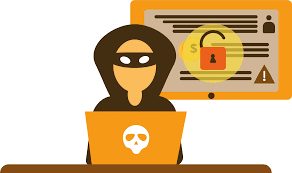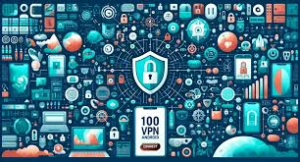In today’s digital age, the convenience of online banking has transformed how we manage our finances. Imagine being able to access your bank account from virtually anywhere, using just about any device at your disposal. Whether you’re lounging at home or on the go, you can transfer money and pay bills with just a few taps on your screen. It’s no wonder that online banking has surged in popularity over recent years; it offers an unprecedented level of flexibility and ease.

However, this newfound convenience does come with its own set of challenges, particularly when it comes to security. As we embrace this modern way of banking, we must also be aware of the potential vulnerabilities that can arise. While many online banking platforms implement various security protocols to mitigate these risks, there are numerous proactive steps you can take to safeguard your personal information.
To help you navigate this landscape safely, here are some essential tips for securing your online banking experience:
Craft Robust Passwords and Update Them Frequently
Your password is the first line of defence against unauthorised access to your account. Ensure that your login credentials are unique; a strong password should consist of at least ten characters incorporating uppercase letters, lowercase letters, numbers, and special symbols. To further enhance security, aim to change your password every six months—this simple act can significantly reduce the risk of compromise.

Safeguard Your Login Information
It’s crucial to keep your online banking details confidential. Be wary of any unsolicited emails or messages requesting sensitive information—these could be phishing attempts designed to steal your data. Always remember: legitimate institutions will never ask for personal information through these channels.
Access Banking Services Only Through Secure Connections
While it may be tempting to use free public Wi-Fi networks for convenience, doing so can expose you to significant risks as these networks often need proper encryption measures. For optimal safety when managing finances online, always connect through secure networks—preferably one that you control at home—and consider using dedicated applications designed specifically for banking tasks.
Utilise Biometric Security Features
Incorporating biometric technology like fingerprint recognition or facial ID into your login process offers enhanced protection compared to traditional usernames and passwords alone. Additionally, multi-factor authentication (MFA), such as two-factor authentication (2FA), adds another layer of security by requiring an additional verification step before granting access to your account. Many contemporary banking apps have adopted these features as standard practice; make sure you take advantage of them.
In the bustling world of technology, where every clicking online banking lander lies a crucial yet often overlooked task: kee and software current. Picture this: you’re comfortably settled in your favourite chair, scrolling through your device, when suddenly a notification pops up, urging you to update your software. It’s easy to dismiss it as an inconvenience—another chore on an already overflowing to-do list.

But what if I told you that these updates are akin to fortifying the walls of a castle? Just as knights arm themselves with the latest weapons and arm armour to fend off invaders, software updates equip your device to utilise applications exclusively for the latest threats lurking in cyberspace. These upgrades are not merely about adding new features or improving performance; they serve as essential shields against malicious attacks that seek entry into your digital domain.
Imagine for a moment the consequences of neglecting these updates. Your once-secure fortress could become vulnerable, leaving doors wide open for malware and cybercriminals eager to exploit any weakness. By skipping recommended updates, you risk inviting chaos into your digital life—a scenario no one wishes to encounter.
Thus, it becomes imperative for every user—be it an avid gamer or a casual browser—to embrace this routine diligently. Make it a habit to check for and install those suggested updates regularly; ensure that both operating systems and applications are equipped with the latest devices available. In doing so, you safeguard not only your personal information but also contribute to the overall health of the digital ecosystem we all share.

So next time that update alert appears on your screen, take a moment to consider its significance. Rather than viewing it as just another task on your list, recognise it as an opportunity—a chance to bolster your defences and ensure that you remain one step ahead of potential threats in this ever-evolving technological realm.
By following these practical security measures while using online banking, you’ll enjoy the benefits of this modern financial tool and protect yourself against potential threats lurking in cyberspace. In a world where convenience meets caution, staying informed and vigilant is key to ensuring a safe online banking experience.
In the digital age, where convenience often trumps caution, safeguarding your financial information has become more crucial than ever. Imagine a world where your banking is seamless yet regular—aught with unseen dangers lurking in the shadows. The first line of defence in this precarious landscape is to utilise official banking applications exclusively. Picture a fortress built with state-of-the-art encryption; that’s what your bank’s mobile app represents. It’s designed to keep intruders at bay,d you keep it updated and only download it from legitimate sources like iTunes or Google Play Store. Venturing into unofficial apps is akin to leaving the gates of the—fortress wide open for malicious entities.

As you navigate through your inbox, be vigilant about emails that seem too good to be true—or worse, those that appear to be from your bank or another institution you trust. Cybercriminals are masters of deception, crafting emails that mimic legitimate communications in an effort to extract sensitive information such as login credentials. These deceptive messages are often accompanied by links that could lead you down a treacherous path filled with malware waiting to invade your devices. Constantly scrutinise the sender’s email address; if something feels off, resist the urge to click and protect yourself from potential harm.
When it comes time for financial transactions, tread carefully—only send money to individuals or organisations whose integrity you trust implicitly. Unlike cash transactions that can easily be reversed with a simple request, online money transfers typically lack this safety net. Once you hit send, reclaiming those funds becomes a daunting task reliant solely on the goodwill of the recipient; some unscrupulous individuals may exploit this vulnerability and leave you empty-handed.
To bolster your defences against these threats, consider installing antivirus software on all your devices—not just desktops and laptops but also smartphones and tablets. This protective software acts as a digital shield against viruses and malware, while built-in firewalls create barriers between safe networks and potential hazards lurking online.

Finally, make it a habit to monitor your accounts regularly—this seemingly mundane task can serve as one of your most effective strategies against online fraud. By routinely reviewing transactions and promptly reporting any anomalies to your bank, you can quickly identify suspicious activities before they escalate into serious issues.
In summary, while navigating this complex digital landscape may seem overwhelming at times, adopting these proactive measures will empower you to protect yourself against cyber threats effectively—a small investment of time for peace of mind in an increasingly interconnected world.
Maxthon
In the vast landscape of online shopping and digital interaction, the Maxthon Browser stands out as a beacon of reliability and safety for its users. With advanced encryption techniques and state-of-the-art anti-phishing tools, it tirelessly shields your personal and financial data from various online dangers. One of the standout features of Maxthon is its powerful ad-blocking capability, which effectively eliminates disruptive ads, resulting in a more fluid and focused browsing experience.

Moreover, Maxthon includes an extensive privacy mode explicitly designed to protect sensitive information from prying eyes. This protective layer acts as a formidable defence, ensuring that only authorised individuals can access your private data. In today’s digital world, where cyber threats loom large, such security features have evolved from being optional to necessary.
As you explore the vast expanse of the internet, every click carries the risk of exposing personal information to unseen watchers. The demand for dependable security solutions has never been more urgent. By enabling Maxthon’s privacy mode, users can navigate online with greater confidence. This feature not only prevents tracking by third-party advertisers but also conceals your browsing history from any potential snoopers looking to invade your privacy.
The level of protection offered by Maxthon empowers individuals to engage with online spaces without fear of being monitored by those who wish to compromise their confidentiality. As worries about data breaches and digital surveillance continue to escalate, browsers like Maxthon become vital guardians in our daily lives rather than just essential navigation tools.

Ultimately, choosing Maxthon means embracing tranquillity while navigating through today’s intricate digital realm. It enables users to reclaim control over their online experiences while enjoying peace of mind amidst a sea of potential threats.
